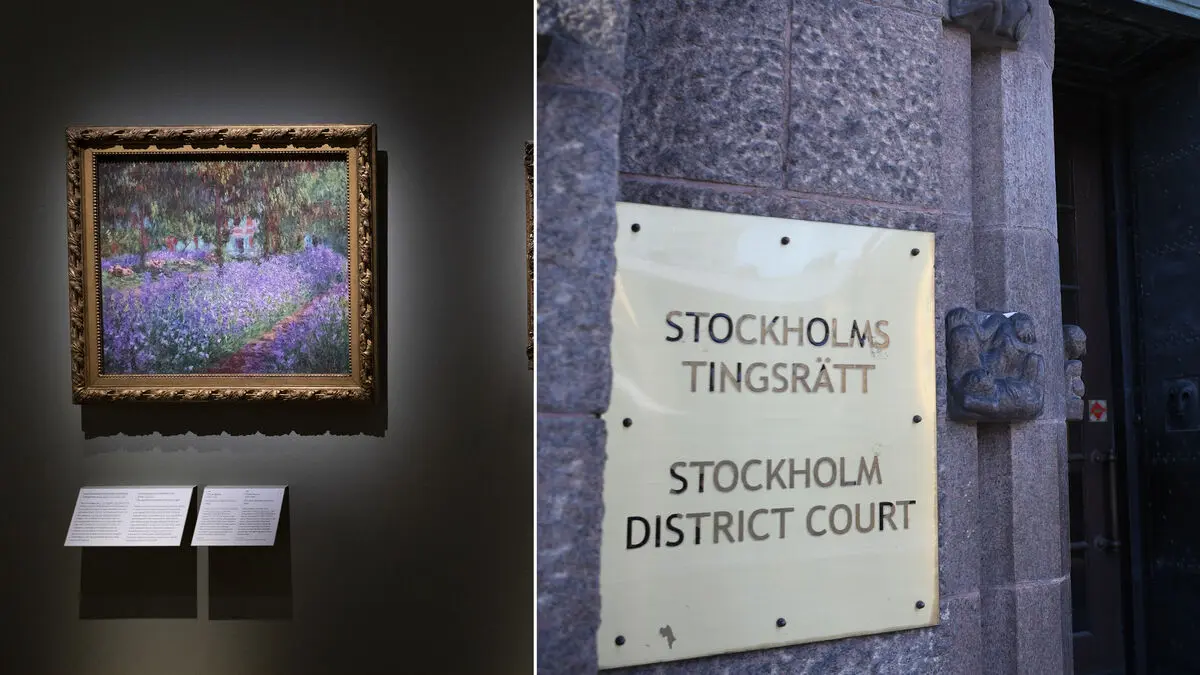The Spring Budget contains forecasts and guidelines for fiscal policy going forward. But the forecasts are already outdated.
The figures, from mid-March, predict a growth rate of 2.1 percent this year. This was a downward revision from the 2.5 percent they believed in the budget proposal last fall. At that time, the government hoped that 2025 would be the year Sweden emerges from the recession.
We saw a certain recovery in December, which now seems to be ruined by a policy being pursued far from here, said Finance Minister Elisabeth Svantesson in SVT's Agenda.
The Ministry of Finance warns that Sweden's growth forecast must be written down further. The reason is President Trump's tariff chaos.
Can get worse
Many threatening tariff increases have indeed been postponed for 90 days. But the Ministry of Finance fears that the tariff pause will lead to Swedish companies pausing their investments while waiting for clear guidance on what will apply. At the same time, households are holding back their money, which does not contribute to getting the wheels of the economy turning.
The recovery in the Swedish economy may be delayed by at least half a year, but the Ministry of Finance is also preparing to handle something much worse.
Last week, for example, concern has grown that confidence in US government bonds and the dollar will collapse, with unpredictable consequences for financial markets.
The Spring Budget contains new proposals for SEK 11.5 billion, which will be added to the current budget for 2025. This includes a stimulus package with, among other things, an expanded ROT deduction, which is intended to create more construction jobs, and money for more places at vocational colleges.
Support households
But it is not expected to go far if the recession deepens. Sweden already has high unemployment compared to the rest of the EU.
Warnings have also been raised that the expanded ROT deduction may become a misinvestment when the effects of global economic uncertainty become apparent.
The government has promised more measures to support households and businesses in the short term to get the economy going and strengthen Sweden's competitiveness in the long term. These may be delayed until the autumn budget for the election year 2026.
No information about the content of the autumn budget is expected to be delivered by Svantesson today. The government wants to know more about how the economy develops.
If the development becomes significantly worse, we will see then how we can support the economy and households, said Svantesson in Agenda.
Stimulus package: SEK 5.8 billion, including:
Temporary increased ROT deduction: SEK 4.35 billion
Increased road maintenance: SEK 0.5 billion
More places at vocational colleges: SEK 0.407 billion
More places at regional vocational training: SEK 0.302 billion
Increased payments from the wage guarantee: SEK 1.15 billion
Increased costs for unemployment insurance: SEK 1 billion
Increased expenditure for international organizations: SEK 0.55 billion
Psychiatric care: SEK 0.5 billion
Prison service: SEK 0.484 billion
Increased school safety: SEK 0.353 billion
Measures against youth crime: SEK 0.357 billion, including:
More youth care places in municipalities: SEK 0.1 billion
More youth care places in SIS: SEK 0.2 billion
School social teams: SEK 0.05 billion
Other approximately SEK 1.3 billion, including:
Measures against hybrid warfare: SEK 0.096 billion
Swedish Maritime Administration: SEK 0.071 billion
Cost of cancelled digital national tests: SEK 0.082 billion
Civil defense: SEK 0.085 billion
Total: approximately SEK 11.5 billion
Source: Ministry of Finance





